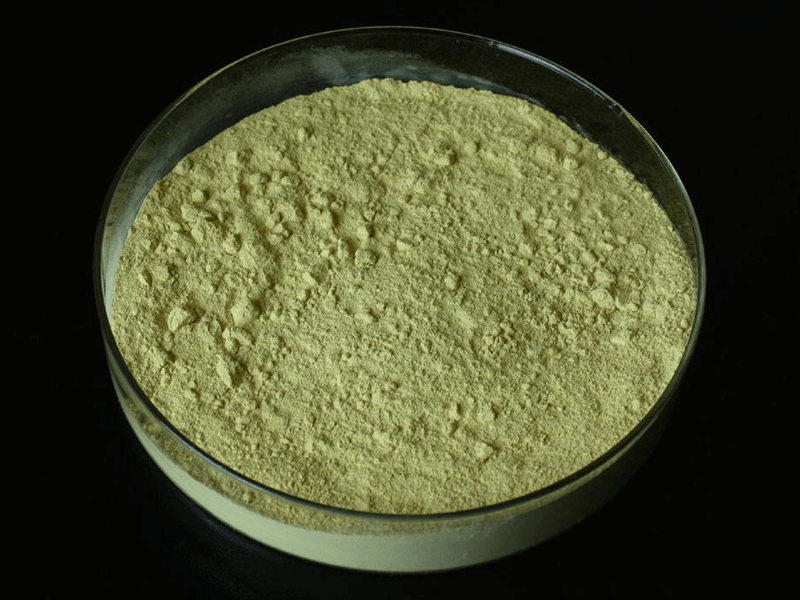The overview of Flavones-rutin, quercetin Sophora japonica Extract
A large class of vegetable polyphenols, substances consisting of an aromatic ring and a hydroxyl group, is called "flavones." This class is divided into five groups, which contain from 2 to 6 types of chemicals. A detailed structure, classification, and the like can only be learned by a chemist. A common person should know that most of these substances are vegetable water-soluble and fat-soluble pigments, useful for the body.
A bit of history
An interesting story is the study of flavones, the effect they have on the human body. For the first time, a pure substance belonging to the class of flavones was received by Albert de Saint-Györdi from Hungarian red pepper, suggesting that he be named "vitamin R". He investigated the effect of this substance on the state of capillaries, published a scientific paper for which he was awarded the Nobel Prize. So in 1936 the era of research of plant pigments began. Almost until the end of the twentieth century it was believed that the flavonoid group included about a dozen chemicals. And only in the 90s of XX century, thanks to scientific works, it was proved that the compounds of this class are more than 4500.
What is the use?
The huge interest of scientists in this group of compounds, large allocations for research appeared "thanks" to the consequences of the use of atomic energy by mankind. There was a need to obtain substances that could remove free radicals from the human body without causing harm to health. It is this property of flavones that has become the subject of research in the first place.
Subsequently, another interesting regularity was discovered. When analyzing the incidence of cardiovascular pathologies and the structure of mortality, WHO experts found that in countries where the daily dose of flavones in food is in the range of 60-70 mg, the mortality from heart attacks is 4-5 times lower than in countries where people consume with food 10-20 mg of these substances. In the category of progressive hit Japan, the Netherlands. It was Japanese scientists, studying the antioxidant effect of flavones, established their ability to restore the walls of blood vessels, to prevent atherosclerotic changes.
Over the last thirty years of active study of the effect of flavones on the body, it has been found that plant juice contains, on average, 0.5 to 5% flavones. But there are also record-breakers. In the juice of flowers, Japanese Sophora contains 20% of flavones.
Where to find?
So, flavones - a huge class of substances contained in many fruits, vegetables, other products. But what should you eat regularly to stay young or what vitamins to drink?
Here is a small list of known flavones, which have an antioxidant effect, restoring the vascular wall, preventing the formation of tumor cells:
· Quercetin is found in tea, onions, grapes of dark varieties, broccoli, cherries;
· Resveratrol is abundant in red grapes, cranberries;
· in soybeans, products made from soy, many isoflavones;
· Silymarin, which is a lot in artichokes, in tableted form, doctors use as a hepatoprotector (it well restores the functions of liver cells);
· Catechin, contained in tea, in its effect is much higher than vitamins C, E, A. Only tea should be drunk without milk. It has the ability to bind flavones;
· All the favorite citrus fruits contain a whole group of flavones, not only preventing the formation of tumor cells, but also helping to restore the body after extreme sports or emotional stress.
The role of flavones
The efficacy of flavones is multifaceted, it is a very powerful antioxidant, which can effectively remove the oxygen free radicals in the body, such as anthocyanins, anthocyanins can inhibit the full stage of oily peroxide overflow, this prevents oxidation The ability of vitamin E is more than ten times, this antioxidant can prevent cell degeneration, aging, but also prevent the occurrence of cancer.
Flavones can improve blood circulation and lower cholesterol. Flavones in heavenly plants also contain a kind of PAF anticoagulant factor, which can greatly reduce the incidence of cardiovascular and cerebrovascular diseases and can also improve the symptoms of cardiovascular and cerebrovascular diseases.
Flavones, known as anthocyanins, have been shown to reduce blood glucose by 26% and propyl triphosphate (39%) in animal experiments. The blood sugar lowering effect is amazing, but more importantly, it is stable Collagen, so it has a good effect on diabetic retinopathy and capillary embolism.



 Healthier Future
Healthier Future